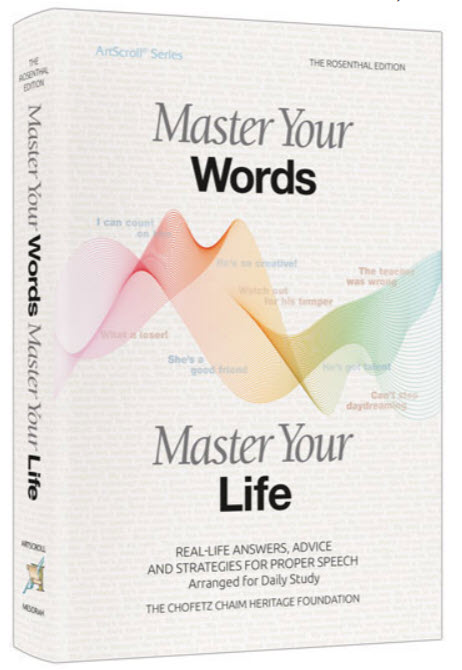Thanks to the generosity of Shlomo & Shifra (Sam & Anita) Friedlander, we have a great opportunity to learn one of the most contemporary works on purity of speech.
This Sefer is free to every Shul member. All you have to do is read 2 pages a day. The Sefer is in English and is very easy to learn with your spouse, children, friend, chavrusa, or even yourself! Something meaningful to learn on a Shabbos or before you go to bed.

TAKE CHARGE.
Of your words.
And your life.
And see how
happy and fulfilled
you can become.
All you have to do is commit to learning 2 pages a day – it’s that simple ! To join after this Friday, contact the Rabbi.
You can either:
1) Start from pg. 52 from the beginning,
or 2) start from page 106 which corresponds to Sivan 27 (Friday), or if you are ambitious,
3) learn on Shabbos pp. 52- 109, and then
begin on Sunday from page 110, and be caught up with the present cycle.
What Does KEHILA Stand For ?
K – One of the Pillars of Our community is KINDNESS
E – Here is where you plug in to get your spiritual ENERGY
H – Always HAPPY to see & help each other
I – INSPIRED by each other to grow
L – Illuminating each other with the LIGHT & LOVE of Torah
A – Where the ATMOSPHERE of our AVODAS Hashem is AWESOME !
Ron Wolfson, Relational Judaism. pg 37-38 More than this: in Judaism, community is essential to the spiritual life. Our holiest prayers require a minyan. When we celebrate or mourn we do so as a community. Even when
we confess, we do so together. Maimonides rules that “One who separates himself from the community, even if he does not commit a transgression but merely holds himself aloof from the congregation of Israel, does not
fulfill the commandments together with his people, shows himself indifferent to their distress and does not observe their fast days but goes on his own way like one of the nations who does not belong to the Jewish
people — such a person has no share in the world to come.” (Maimonides, Hilkhot Teshuvah 3: 11)
Rabbi Lord Jonathan Sacks The Jewish endeavor is about learning to live in community. Something that previous generations took for granted, today we have to work at to achieve. Community does not come easily to
us raised in a culture of rugged individualism. Live and let live is the American way. But living in community is the Jewish way. You can’t be a Jewish hermit; Judaism, if lived fully, demands of us involvement with others.
Rabbi Mordecai Kaplan Religious identity is based on the “three Bs” of believing, belonging, and behaving….What gives Jews their sense of identity is not primarily belief, but rather, belonging. It is the idea of
“peoplehood,” the sense of belonging to the Jewish people, the Jewish community that distinguishes Jewish identity from other religious traditions.
Rabbi Avraham Yitzchak Kook, Orot….The soul of the individuals is drawn from … the community, the community bestowing a soul upon the individuals. One who considers severing himself from the people must
sever his soul from the source of its vitality. Therefore each individual Jew is greatly in need of the community.
He will always offer his life so that he should not be torn from the people, because his soul and self-perfectionrequire that of him. (p. 144)
Rav Aharon Lichtenstein ZT”L, Brother Daniel and the Jewish Fraternity….The ger cannot embrace Judaism without simultaneously becoming a member of the Jewish people. He cannot, that is, accept the spiritual aspect of Jewry without the material….The [ger] embraces not only Jewry’s present fortunes but its history as well.
